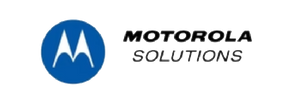Digital Vs Analog Two Way Radios

Digital two-way radios are now more accessible than ever due to the introduction of affordable digital two-way radio models into the Australia marketplace, including the Wireless Pacific Go PRO™, Motorola DP3441E Icom IC-F4400DS, Tait TP3350 and Kenwood NX-1300 models, putting all the benefits of digital technology within reach of most businesses, where in the past digital technology was usually only affordable to government agencies. So what are the differences between analogue vs digital two-way radio technology, and what are the main advantages and benefits of making the switch to digital?
Digital two-way radio systems communicate with each other via sending and recieving data. Therefore, a digital two-way radio system offers a whole host of potential options and benefits over an analogue two-way radio system. The key benefits of digital two-way radios are outlined below.
Better Coverage:

The coverage with digital radios is perceived to be better than analogue radios by approximately 20%. The reasons for this are as an analogue radio signal weakens, the receiver of the analogue broadcast will hear a lot of white noise, "hiss" "crackle" and "pop", until eventually the radio signal drops out of range completely. However, before the analogue broadcast drops out of range completely, the last 20% of the range is very hard to understand what the radio user was saying due to the level of white noise accompanying the analogue conversation. With digital, you do not experience such a perceptible shift in the audio quality, and no noise is interlaced with the conversation as the radio signal weakens, therefore, you get a useable 20% of extra perceptible coverage. This concept is explained in the graph below:
Digital Radios Offer Optional Encrypted Communication:
Unlike analogue radios, digital radios communicate via exchanging data with each other. This data can be optionally encrypted via a 40-bit or 256-bit AES encryption key module, that can be installed in the radio.
In order for a 3rd party to listen to a digital radio broadcast that was encrypted, they would have to be able to record and crack the encryption of the data sent between the radios. To crack this encryption, this could only be achieved by a law enforcement authority with the technological means to do so, and could not be achieved in real-time. By installing an encryption key / module on your digital radio system, your communication cannot be listened to, nor interfered with, by 3rd parties.
Analogue radio transmissions can be easily tuned into and listened to with an inexpensive radio scanner. Therefore, some analogue radio manufacturers offer a "voice inversion scrambler" function to "scramble" the analogue voice communication. However, do not be misled by the term "scrambled", these voice inversion scramblers are easily interpreted as they merely make the voice sound muffled, similar to someone covering their mouth with their hand whilst talking, which can be easily understood. In summary: Analogue radio voice inversion scramblers do not offer the user privacy and are, if anything, simply a marketing gimmick. Therefore, if you require genuine privacy for your communication, you must use a digital system with an encryption key / module installed.
For users requiring commercial-grade 40-bit digital encryption, consider the Wireless Pacific GTD or Kenwood NX-340 radio system. For users requiring government-grade 256-bit AES digitally encryption, choose the Motorola DP3441.
GPS & User ID Information:
Do you need your GPS coordinates broadcasted whilst you communicate with your radio system? Perhaps you operate over a large mining project or department of defence exercise? With digital two-way radios with this feature built in, now you can broadcast your GPS coordinates when you talk. Better yet, the receiver can see on the radio's LCD screen who has made the broadcast. So if someone calls for "help" on the radio, you can know exactly who it is, and where they are located. See the Icom IC-F4263D for further details of such a feature.
"Disadvantages" of digital two-way radios:
Digital two-way radio systems send data and the digital protocol in which it does so, is not universal between the various digital two-way radio manufacturers out there. Therefore, once you invest into a particular manufacturer's brand of digital radio system, it's difficult to add radios to the system in the future, that are not produced by the same manufacturer. However a number of manufacturers make radios compliant to the DMR Digital Standard which allow you to source from different manufactures in most cases. However, each protocol has its added technological advantage, and therefore if the correct purchase decision is made from the start, then this is not a huge drawcard for most businesses, unless there is a specific need for 3rd parties to get connected to the organisation's digital radio system in the future.
The second potential "disadvantage" of digital two-way radio, is you are required by law to use your own licenced channel. You cannot use a digital radio on a public CB channel. Given that one of the key benefits of digital two-way radio is that you avoid experiencing interference, this legal requirement could be interpreted as an advantage, rather than a disadvantage, despite the additional small cost outlay to obtain a licenced channel.
Summary:
In summary, digital two-way radio is the future of radio technology and on balance, we highly recommend using a digital two-way radio system, over an analogue radio system, for business communication purposes.











